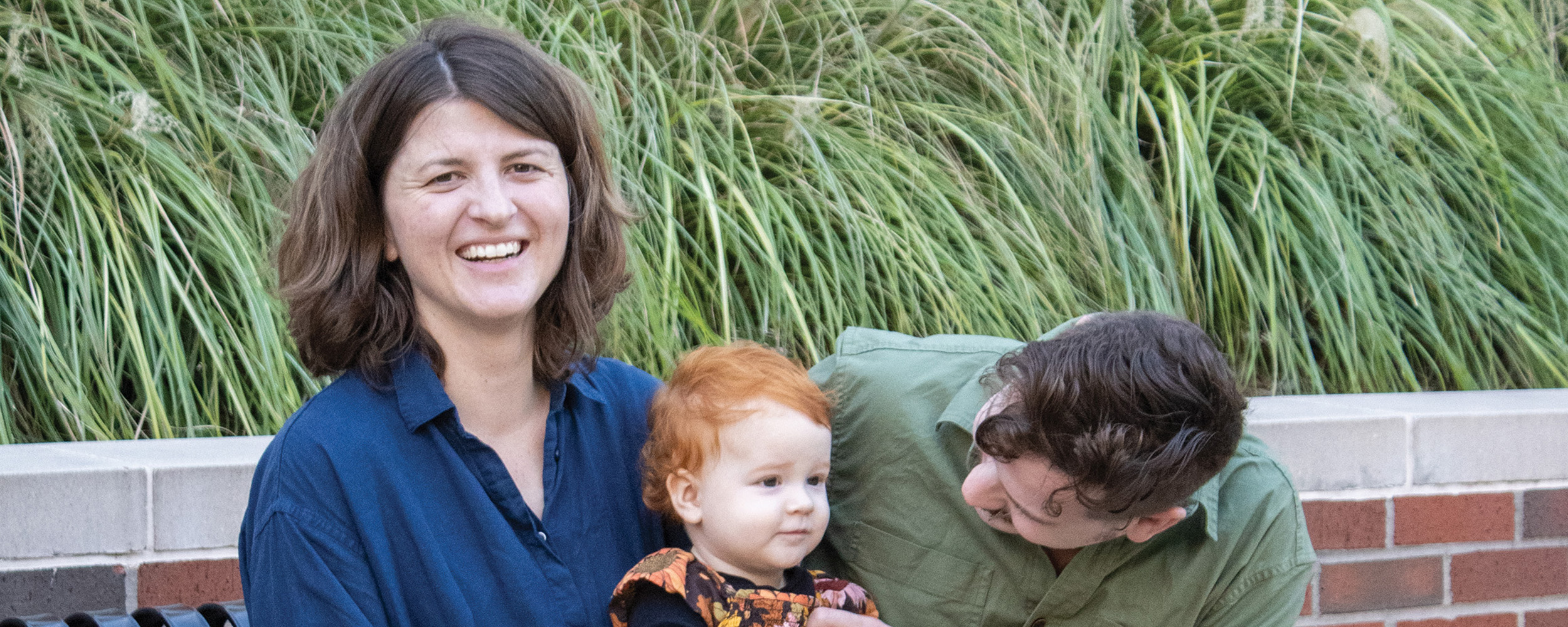
Finding the Perfect Balance
Monday, January 9, 2023
Media Contact: Kaitlyn Weldon | Digital Communications Specialist | 405-744-7063 | kaitlyn.weldon@okstate.edu
For a business to operate well, a plan is necessary. Every basic business plan includes the same three things: good employees, a product people want and a person to lead the business to success. A research lab follows the same model.
Andrea Jilling, an assistant professor in the Oklahoma State University Department of Plant and Soil Sciences, found this to be true while trying to balance maternity leave and continuing her research on soil dynamics.
“Leading up to my maternity leave, I was trying to figure how to keep my lab productive and support the research in my absence,” Jilling said. “Assistant professors are expected to build a productive and active research program.”
When people in academia need to take personal leave, they are not always aware of the resources available to assist in keeping their research going, Jilling said.
“A vulnerable time for women in academia to have maternity leave is during their assistant professorships,” she added.
An assistant professor is an early-career faculty member, said Tyson Ochsner, a plant and soil sciences professor. Assistant professors are “young professionals” who are learning fast and adjusting to their new environment, he said.
“Assistant professors sometimes move from across the country and this is difficult when working in natural resources,” Ochsner said. “This time can be stressful.”
While being proactive about her situation, Jilling applied for a Career-Life Balance Supplement grant through the National Science Foundation. This grant provided Jilling with financial support that would allow resources and personnel to be put into place to keep the lab running efficiently while she was on maternity leave.
“Research can’t stop,” Jilling said. “Agencies like the National Science Foundation are creating new resources like this grant to help working parents not have such a hard interruption in their research.”
Jilling, an NSF research fellow, used the Career-Life Balance Supplement grant to support her research project.
Jilling’s project about soil nitrogen dynamics includes research involving the different ways plants and microbes accessnitrogen.
“Not all nitrogen in soil is created equally,” Jilling said. “Some nitrogen compounds move around freely, which is what the plants take up.
“Other forms of nitrogen in soil can remain there for decades if stuck to clay and silt particles,” she added. “Week to week and season to season, the amount of nitrogen available in the soil changes.”
The end goal of Jilling’s research is to provide scientists and food producers with a better insight into nitrogen availability.
In her faculty role, Jilling teaches one class, but the majority of her work-load is research-oriented. Therefore, she has more than one research project at a time.
The Career-Life Balance Supplement grant assistance only applied to one of her projects.
“It’s like having a boss for a small business and the owner is just gone,” Jilling said. “The lab really feels like a small business with the staff, budget and the way things are run.”
Jilling was proactive in ensuring her students, whether in the classroom or conducting research in the lab, were well taken care of.
Jilling leaned on her network of colleagues to fill in during her absence.
“The department is organized in a way that we run our own independent programs,” said Shiping Deng, a plant and soil sciences professor. “It can be challenging to take time off.”
Each professor manages his or her own research program, including the lab and lab equipment.
One of the most challenging parts of maintaining a lab program is keeping its equipment functioning and having trained personnel to continue the research.
Many professors look to hire students to work in their labs, Deng said. But, hiring students requires in-depth training programs.
“The thing with students is that once they are hired and put through training they graduate and you have to start all over again,” Deng said.
Jilling had to put a lot of thought early into her research and received an NSF grant — an outstanding accomplishment, Deng added. She used these resources to ensure the staff in the lab had the proper training and knew what to do, Deng said.
“I luckily had an awesome technician, postdoc and students,” Jilling said. “My staff did an awesome job, but they admit it was hard in my absence.”
Jilling’s postdoc taught her class, and the students working in the lab were second-year graduate students who had knowledge on how to run the lab, Jilling said.
No one within the department or the university thinks exactly like anyone else, Jilling said. Therefore, the specific questions that arose were difficult for the students and staff to answer.
“Leave is leave, and we had to deal with the issues that came up,” Jilling said. “Every little piece adds up, but you just have to understand that and move forward.”
Successful assistant professors and researchers build their network and build friendships, Jilling said. Jilling learned the importance of making connections and leaning on your colleagues and the relationships established within academia.
“People will always help and provide the extra support where it is needed,” Jilling said. “However, don’t wait for that help to come — be proactive.”
Story By: Addison Spicer | Cowboy Journal
